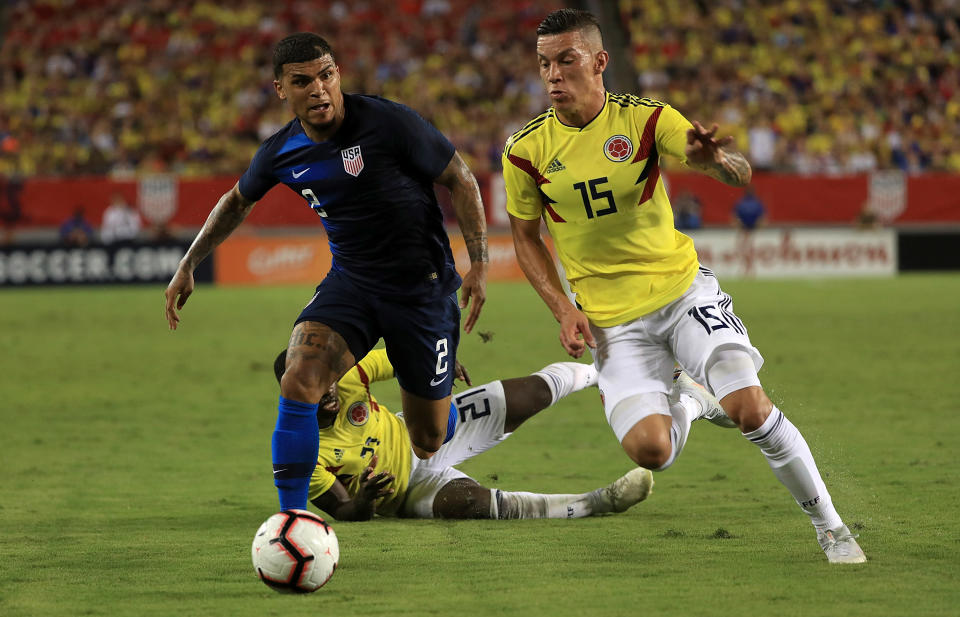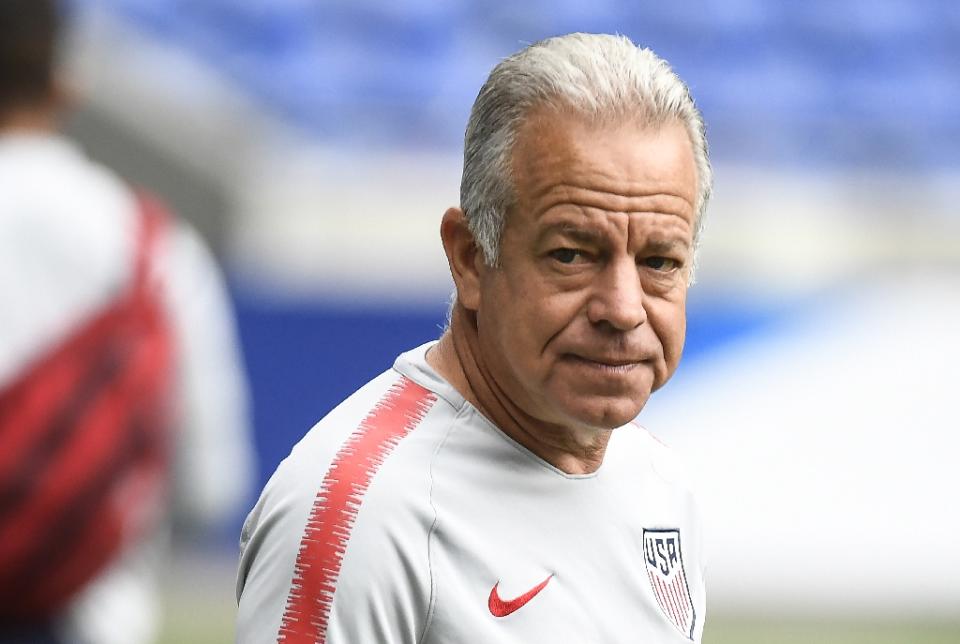Hard to know what to make of the USMNT right now thanks to new stars, old management, inactivity

These are strange days in the arc of the U.S. men’s national team.
Certainly, the old soccer idiom still applies. You never know what you’re going to get from kids.
And there are a lot of kids on this post-World Cup qualifying failure version of the USA, which finds itself fully in rebuilding mode yet also putting up surprising results. And while scorelines in friendlies a full four years from the next World Cup aren’t everything, they’re also not nothing, underscoring an odd sort of efficiency in an embryonic team.
It’s hard to know what to make of this incarnation of the USA right now.
It’s been a year and two days since Couva, the little seaside town in Trinidad that became synonymous with American failure when a 2-1 loss there knocked the United States out of World Cup qualifying for the first time since 1986.
It’s been 1,564 days since the U.S. last played a game at a World Cup. It will be at least another 1,503 days until the Yanks play in another. At least. There’s no urgency to get things right at all. And with the team in the interim care of Dave Sarachan, the promoted assistant of Bruce Arena, who resigned in the wake of the qualifying disaster, the federation has taken its sweet time in naming a successor while the fans have ached for some kind of resolution and clarity.
There are myriad legitimate reasons for the year-long delay. But those feel unsatisfying when the consensus seems to be that Columbus Crew head coach Gregg Berhalter will wind up in the job in the next month or so – a man who likely was just as qualified and interested a year ago.
This, then, is very much an interim national team.

Yet a glance at the results obscures the fact that Sarachan has handed debuts to reams of young players in search of a future core for a national team that had aged quickly under longtime manager Jurgen Klinsmann – who made way for Arena early in qualifying.
A tie with Portugal. A tie with Bosnia and Herzegovina. Another with a full-strength France, just weeks before it would win the World Cup. Victories over Paraguay, Bolivia and Mexico, offset by losses to Ireland and Brazil.
On Thursday, the U.S. came from behind to lead a star-studded Colombia, before squandering it and losing 4-2 in front of an overwhelmingly pro-Colombian crowd in Tampa.
Just as they were against Brazil, the Americans were largely dominated by a full-strength Colombia team that ran through its half at will. But that the Americans were in the game at all — thanks to a pair of quick U.S. goals after halftime by Kellyn Acosta and Bobby Wood, before Carlos Bacca and Radamel Falcao restored order, following a magical Colombian opener from James Rodriguez – was sort of remarkable.
Because this is a U.S. team that is both rejuvenated and stagnant.
For all the new blood in the team, the coaching staff is a holdover from the previous regime and a new man to plot out the future remains absent. For a year, the team has been giving games and experiences to a new generation of national teamers while working within the framework of the old management.
That unusual limbo was illustrated by the return of several veterans to the team in midfielder Michael Bradley and goalkeeper Brad Guzan, both of whom have been blamed by a sizable part of the suffering fan base for the failures past. (Striker Jozy Altidore was a scratch because of an injury.) Indeed, Bradley not only started after a year away from the team but reclaimed his captain’s armband.
Meantime, the trio of not-quite-drinking age midfield studs Christian Pulisic, Weston McKennie and Tyler Adams was entirely ruled out because of various injuries. It felt apt.
[ Follow Yahoo Soccer on Twitter and Facebook ]
The Americans, as they mostly have since failing to qualify, were undaunted by the famous opposition and unruffled in their determination to play positive soccer in spite of facing plainly superior talent. They were also resoundingly outplayed. It was sometimes promising and sometimes underwhelming. A snapshot for the past year of careening between the old and the new.
It all figures into the larger question of what, exactly, has been accomplished since Couva.
You try to look at the broad sweep of things, peering beyond avoidable turnovers and results in friendlies.
Organizationally, very little has gotten done. Certainly, the federation landed co-hosting rights to the 2026 World Cup, and that will likely represent another inflection point in the history of the game stateside. But from a national team program perspective, all that’s been delivered in a year is the hiring of technical director Earnie Stewart. That’s a thin list of notable accomplishments.
On the field, a new team is taking shape, with a generation of arguably unprecedented talent seizing roles. But then the old guard is sort of still around as well. Transitions tend to be gradual, but then there’s little upside to giving minutes to veterans whose national team caps appear numbered. Yet it all feels conditional anyway. A new coach might decide he’d like to fashion a team from different players entirely.
Nothing counts quite yet. Which is probably just as well, since the numbers on the scoreboards have been all over the place. And it all conspires to make this a deeply confounding time to be watching the U.S. men’s soccer team.
Leander Schaerlaeckens is a Yahoo Sports soccer columnist and a sports communication lecturer at Marist College. Follow him on Twitter @LeanderAlphabet.
More soccer on Yahoo Sports:
• Takeaways from the U.S. friendly loss to Colombia
• United States, Mexico learn 2019 Gold Cup destinations
• USMNT Stock Watch: Why Bobby Wood’s breakout comes at the right time
• Stewart interviewing finalists for USMNT coach


